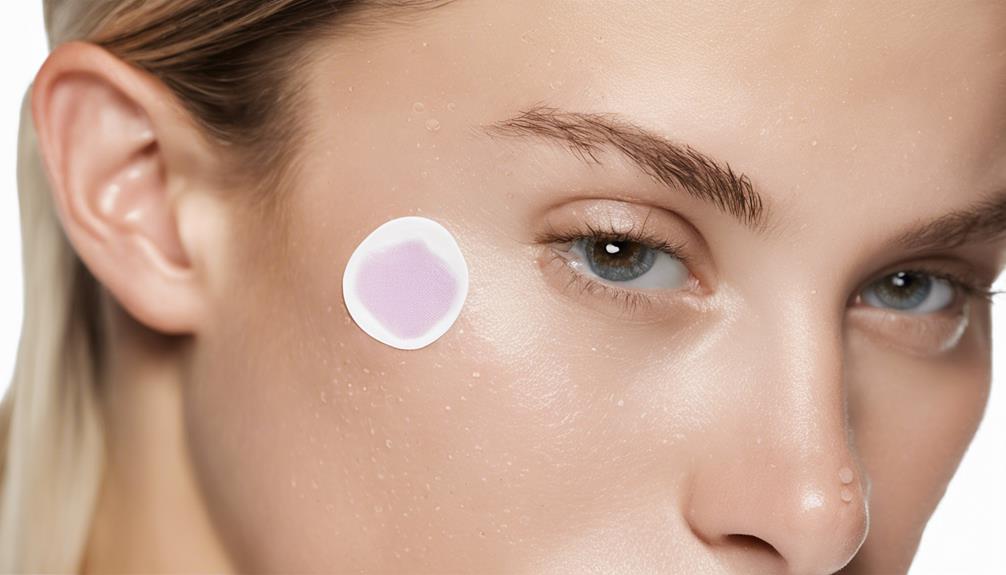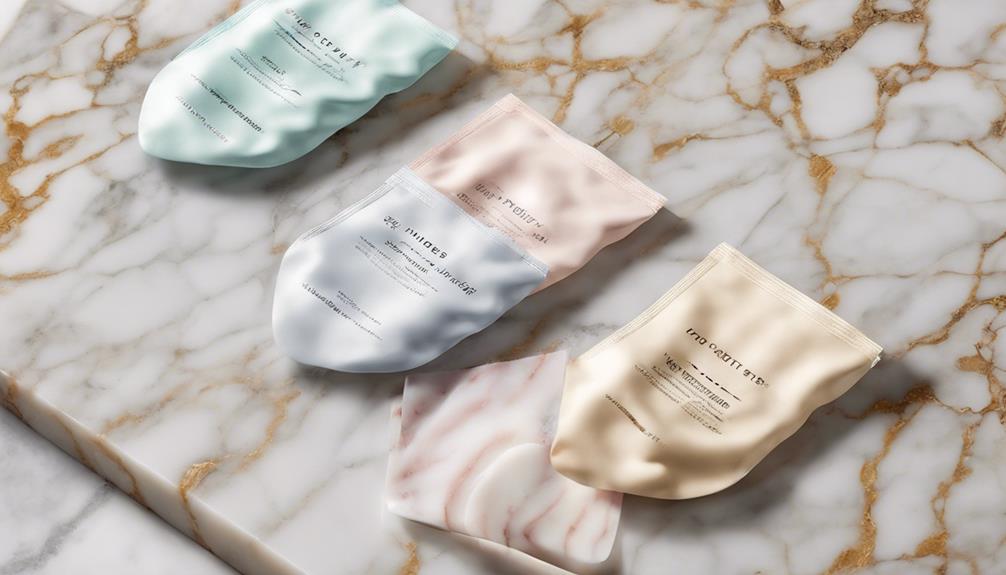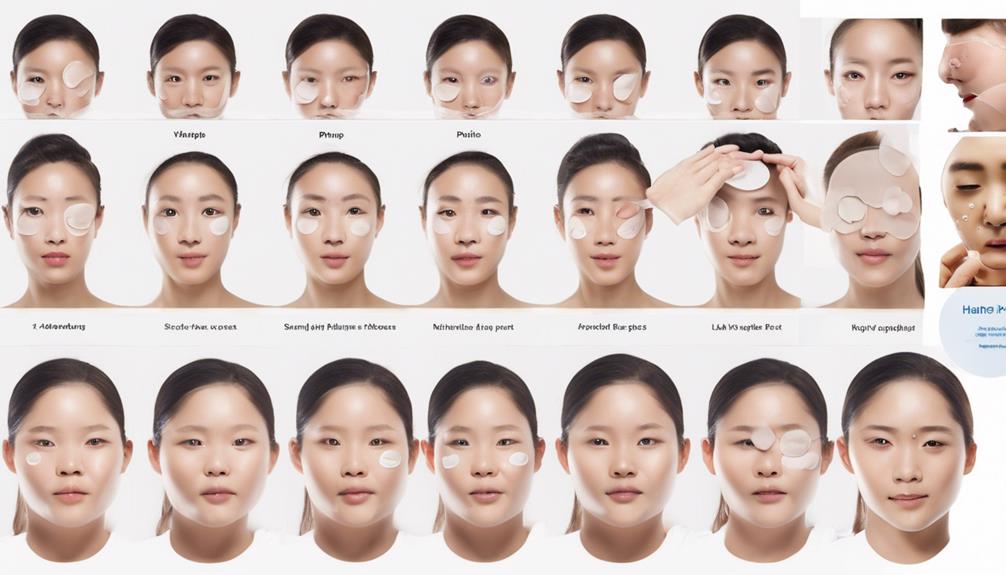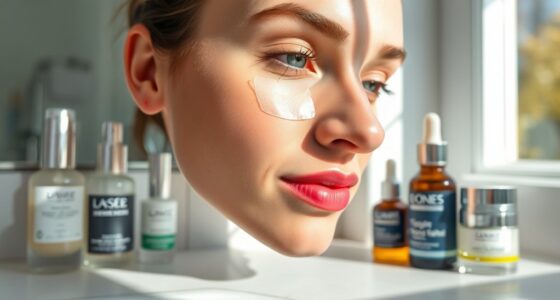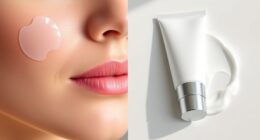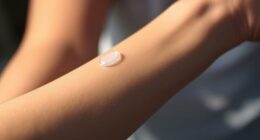When used correctly, pimple patches can help prevent scarring. These patches form a barrier that reduces inflammation and speeds up the healing process of acne blemishes. Factors like improper use or picking at the skin while using patches can increase scarring risks. Choosing the right patch type and following application instructions are vital to minimize scarring chances. Proper application and staying mindful of how long you wear the patches can help in preventing scars. Pimple patches contribute to smoother skin texture and decreased scarring likelihood. Understanding their benefits and proper usage can lead to effective scar prevention and healthier skin.
Key Takeaways
- Properly used pimple patches reduce scarring risk by preventing skin picking.
- Patches create a barrier, absorb oil, and promote healing, minimizing scar formation.
- Incorrect usage, like leaving patches on too long, can lead to scarring.
- Choosing suitable patches and following instructions is crucial to prevent scarring.
- Pimple patches, if used correctly, aid in preventing long-term acne scarring.
The Science Behind Pimple Patches
Pimple patches play a vital role in creating a protective barrier over the affected area to prevent scarring. These patches, made with ingredients like hydrocolloid, work to reduce the risk of post-inflammatory hyperpigmentation. By absorbing excess oil and impurities, they aid in healing acne faster, minimizing the chances of scarring.
The protective barrier also prevents external bacteria from causing further damage, promoting a clean environment for the skin to recover. The hydrocolloid present in these patches helps in flattening pimples and keeping the area moisturized, which is essential for preventing scarring. Additionally, ingredients like salicylic acid in pimple patches play a role in reducing inflammation and promoting skin regeneration.
Using pimple patches correctly not only helps in healing the acne but also decreases the likelihood of scarring, making them an effective tool in skincare routines aimed at preventing long-term skin damage.
Factors Influencing Scar Formation
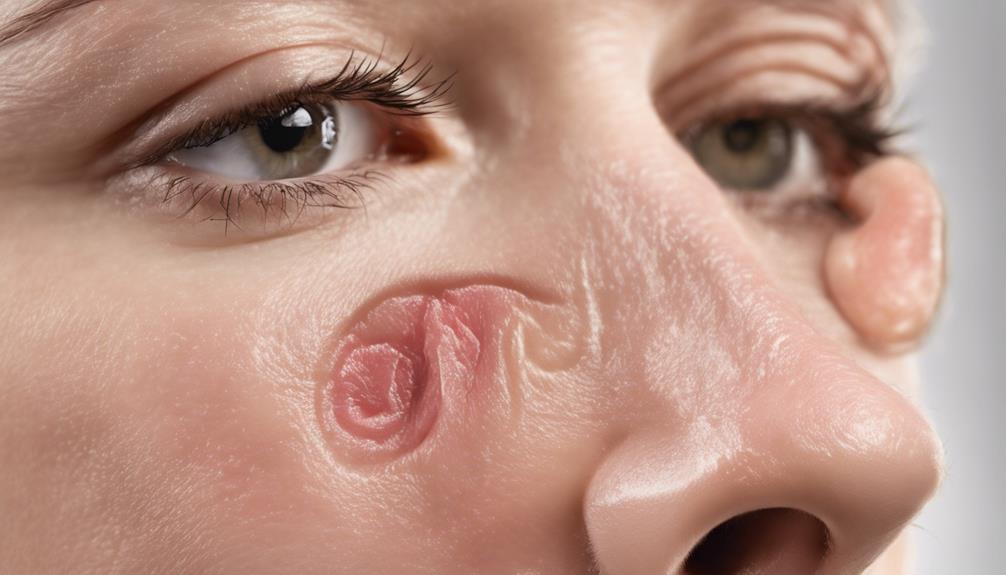
After understanding the role of pimple patches in preventing scarring, it's important to take into account various factors that can influence the formation of scars. Factors such as improper usage of pimple patches, like leaving them on for too long or applying them too tightly, can increase the risk of scarring.
Additionally, picking at or manipulating the skin while using these patches can also lead to scarring. It's essential to choose the right patch type and adhere to proper application instructions to minimize the chances of scarring.
Benefits of Using Pimple Patches
Utilizing pimple patches can effectively create a protective barrier over acne blemishes, aiding in preventing scarring and promoting healing. These patches work by absorbing excess oil and impurities, reducing the risk of scarring by preventing further irritation.
By keeping the affected area clean and protected, pimple patches also help flatten raised areas and minimize the appearance of scars over time. The healing properties of pimple patches contribute to improving skin appearance and reducing the risk of long-term scarring.
Tips for Preventing Acne Scars
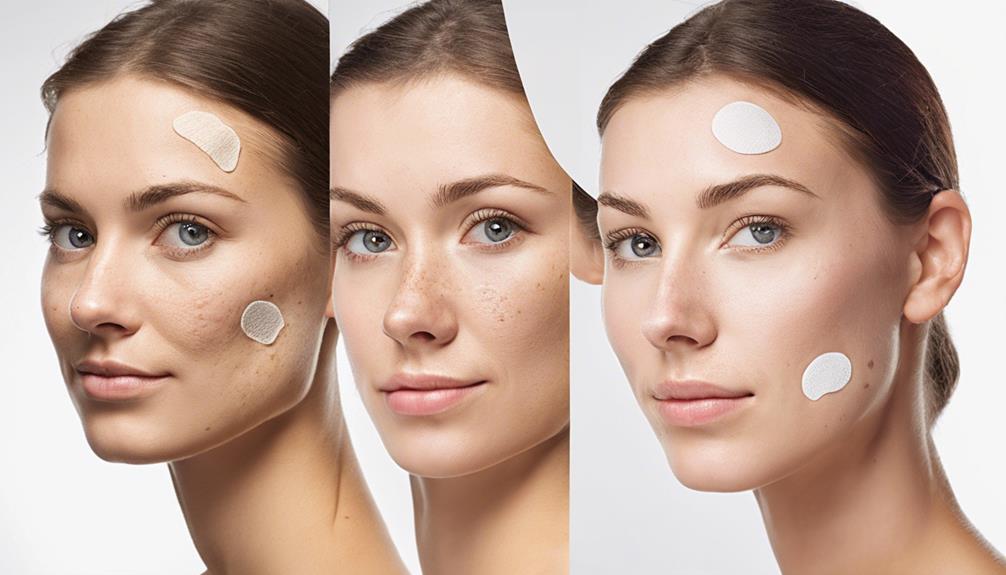
To prevent acne scars, we should avoid picking or squeezing pimples, as this can worsen the condition.
Daily use of sunscreen helps protect skin from UV damage, which can lead to post-inflammatory hyperpigmentation.
Keeping the skin moisturized aids in healing and reduces the chances of scarring.
Scar Prevention Strategies
Using pimple patches correctly can greatly reduce the likelihood of developing acne scars by promoting healing and preventing skin picking. These patches create a protective barrier that helps reduce inflammation, absorb excess sebum, and prevent picking, all of which contribute to scar prevention.
By applying the right size patch to early-stage pimples, you can stop them from worsening and developing into scars. The patches also aid in maintaining a cleaner environment around the affected area, reducing the risk of scarring. Consistent use of pimple patches not only promotes smoother skin texture over time but also decreases the chances of post-inflammatory hyperpigmentation, a common cause of acne scarring.
Healing Damaged Skin
Applying pimple patches correctly promotes healing in damaged skin, aiding in the prevention of acne scars. These patches create a protective barrier that helps to flatten raised areas and reduce the risk of scarring.
It's important to avoid applying the patches too tightly or leaving them on for extended periods, as this could damage the skin and hinder the healing process. Some pimple patches contain beneficial ingredients like hydrocolloid and salicylic acid, which can further assist in scar prevention.
Consistent and careful use of these patches can contribute to improving the appearance of the skin and decreasing the likelihood of scarring. By prioritizing healing damaged skin, we can work towards achieving healthier and clearer skin.
Minimizing Post-Acne Marks
Minimizing post-acne marks involves utilizing pimple patches effectively to prevent scarring and promote healthy skin healing. Pimple patches play a vital role in creating a barrier that shields the healing spot, reducing the risk of scarring by maintaining a healthy healing environment.
These patches help in absorbing excess fluid and debris from early-stage pimples, preventing the formation of scars. By flattening pimples and aiding in reducing post-inflammatory hyperpigmentation, pimple patches are essential in minimizing post-acne marks.
It's important to choose the right patch size, apply it correctly, and replace it as needed to enhance the protection and healing process. Remember, consistent use of pimple patches not only prevents picking but also supports healthy skin healing to minimize the chances of acne scars.
Common Misconceptions About Pimple Patches
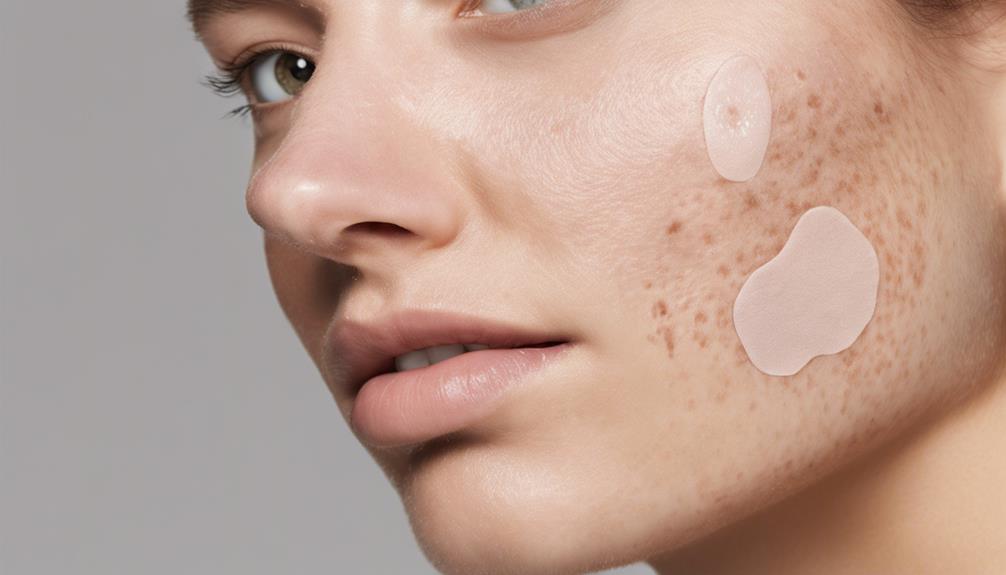
Many people believe that pimple patches can actually cause scarring by trapping bacteria, but this is a common misconception.
In reality, pimple patches are designed to create a healing environment that promotes skin recovery.
When used correctly and following instructions, pimple patches can effectively prevent scarring and support the natural healing process of the skin.
Scar Prevention Effectiveness
Hydrocolloid patches and salicylic acid patches are effective in preventing scarring by promoting healing and targeting inflammation respectively. When it comes to scar prevention, these patches can make a significant impact:
- Hydrocolloid patches create a protective barrier, absorbing excess moisture to reduce the risk of scarring.
- Salicylic acid patches work to unclog pores and decrease inflammation, minimizing the chances of scarring.
- Proper use of pimple patches can help flatten raised areas, decreasing the likelihood of long-term scarring.
Healing Process Clarification
To clarify common misconceptions about pimple patches and their role in the healing process, it is important to understand how these patches prevent scarring when used correctly. Pimple patches, specifically hydrocolloid patches, are designed to help treat active acne by absorbing excess fluid, reducing the risk of infection, and promoting faster healing. By creating a protective barrier over the blemish, these patches prevent external pollutants from entering the skin, which aids in reducing the risk of scarring. Here is a table illustrating how pimple patches work to help heal the skin effectively:
| Function | Effect | Benefit |
|---|---|---|
| Absorb Excess Fluid | Prevents infection | Aids in healing process |
| Creates Barrier | Protects from pollutants | Reduces scarring risk |
| Flattens Blemish | Promotes faster healing | Helps maintain skin integrity |
Real-World Results and Testimonials
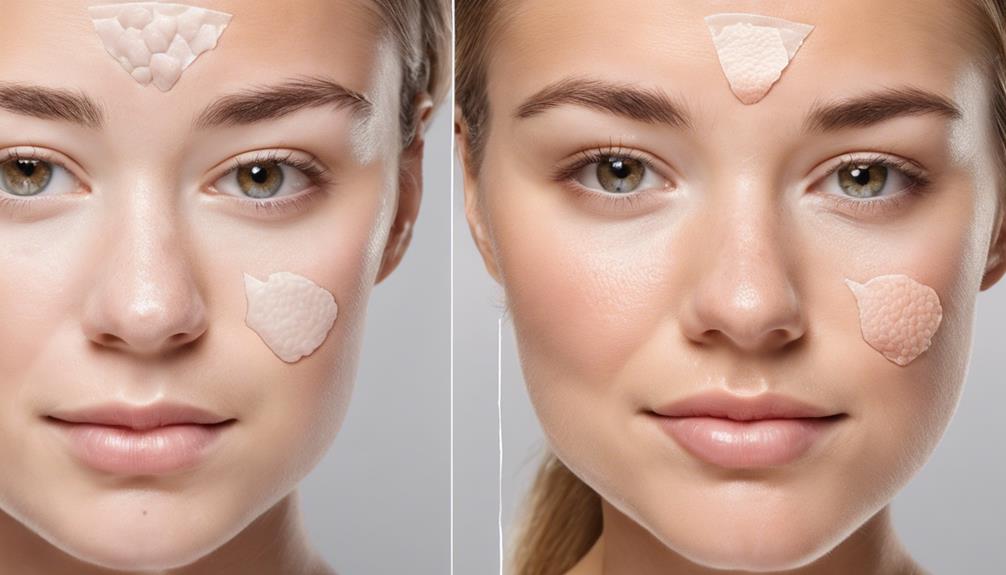
In our experience, pimple patches have proven to be effective in preventing scarring by accelerating the healing process of acne lesions. Real-world testimonials highlight the positive impact of pimple patches in reducing the risk of scarring and promoting faster healing. Users have shared their experiences where pimple patches have:
- Created a protective barrier that shields acne lesions from external irritants, aiding in the prevention of scarring.
- Minimized the appearance of acne scars over time by flattening raised areas and promoting smoother skin texture.
- Contributed to a reduction in post-inflammatory hyperpigmentation, further enhancing the overall skin appearance.
These firsthand accounts emphasize the benefits of using pimple patches as a proactive measure to prevent scarring and improve skin condition.
Expert Advice on Scar Management
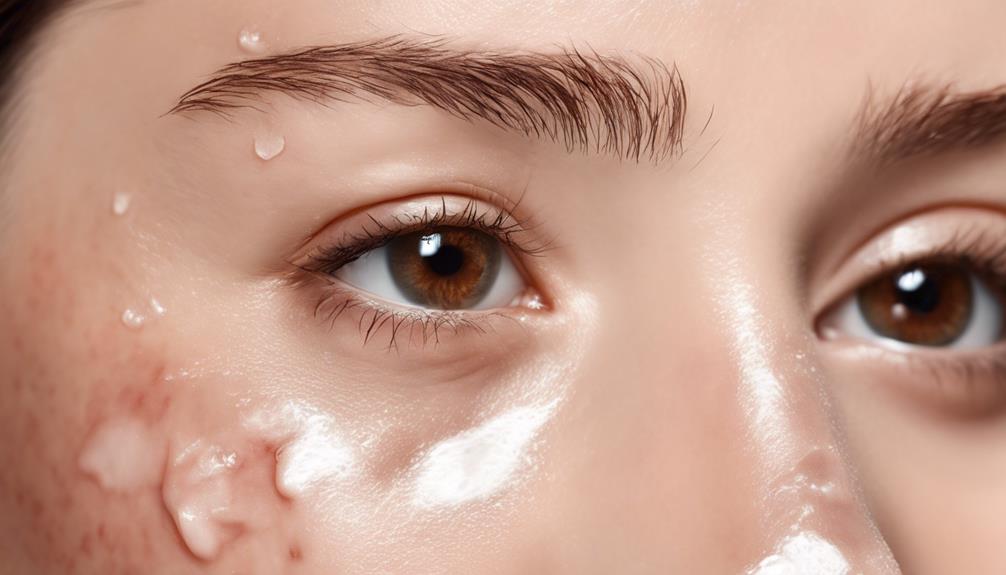
Seeking guidance from a skincare specialist can provide valuable insights on managing scars effectively. When it comes to scar management, using pimple patches with ingredients like hydrocolloid, salicylic acid, and tea tree oil can help in preventing acne and reducing scarring risk. Consulting with an aesthetic doctor allows for personalized scar treatment options tailored to individual needs. While pimple patches can assist in preventing new scars by promoting healing and creating a protective barrier, they might not be sufficient for treating existing acne scars. Other treatments like laser therapy or chemical peels may be required for addressing such scars effectively.
| Hydrocolloid | Salicylic Acid | Tea Tree Oil |
|---|---|---|
| Promotes healing | Reduces acne | Antiseptic properties |
| Creates a protective barrier | Exfoliates skin | Soothes inflammation |
| Prevents scarring | Unclogs pores | Fights acne-causing bacteria |
Conclusion: Addressing Scar Concerns
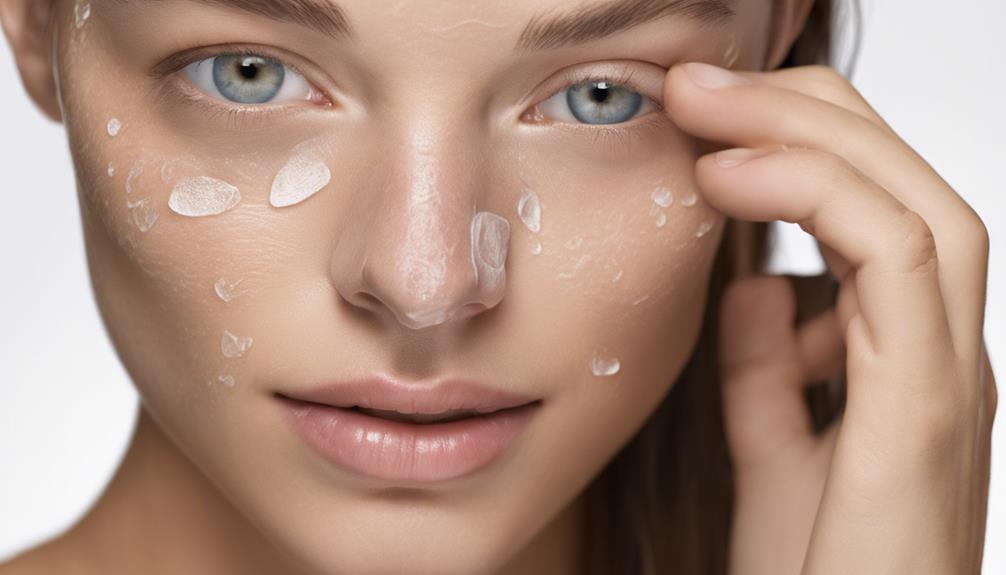
Addressing scar concerns involves understanding the role of pimple patches in promoting healing and preventing scarring effectively. When dealing with scar worries, consider the following points:
- Choose Wisely: Opt for pimple patches that are gentle on the skin and don't contain skin-irritating ingredients to minimize scarring risks.
- Follow Instructions: It's important to use pimple patches as directed to avoid potential complications and ensure best healing.
- Seek Expert Advice: Consulting with a dermatologist for personalized scar treatment options can offer tailored solutions to address any concerns effectively.
Frequently Asked Questions
What Are the Disadvantages of Pimple Patches?
Pimple patches have potential downsides. They can lead to skin irritation and scarring if not used correctly. Applying them too tightly or leaving them on for too long can be harmful.
Some patches contain ingredients that may irritate the skin, exacerbating the risk of scarring. Following proper usage instructions and avoiding common mistakes is important to prevent scarring.
Being mindful of how we use pimple patches to avoid these drawbacks is vital.
Do Pimple Patches Leave Spots?
Pimple patches are a helpful tool in our skincare routine. They aid in treating active acne spots and preventing further damage. When used correctly, they can create an ideal healing environment for the skin, reducing the appearance of spots.
Proper application and gentle removal play a significant role in minimizing skin trauma. Remember, pimple patches are more about healing and protection than leaving scars or spots behind.
Why Did My Pimple Patch Leave a Mark?
We noticed a mark from the pimple patch. Leaving it on too long or applying it tightly can irritate the skin, leading to scarring. Aggressive removal methods, like picking or peeling, may also leave marks.
Allergic reactions to patch materials could cause skin irritation and marks. To prevent scarring, it's important to follow usage instructions, choose patches suitable for your skin, and avoid prolonged use.
How Do You Get Rid of Pimple Patch Marks?
We remove pimple patch marks by gently cleansing the area with a mild cleanser.
Moisturizing regularly to keep the skin hydrated is essential.
Using scar-reducing products like silicone sheets or vitamin E can also help fade the marks.
It's important to give the skin time to heal and avoid picking at any scabs or marks.
If the marks persist, seeking advice from a dermatologist for the best results is recommended for ideal outcomes.
Can Prolonged Use of Pimple Patches Cause Scarring?
Yes, keeping pimple patches on for too long can lead to scarring. Prolonged use of pimple patches can irritate the skin and cause inflammation, which can result in scarring. It’s important to follow the recommended usage guidelines and remove the patches as directed to prevent potential scarring.
Conclusion
In the grand scheme of skincare, pimple patches are like knights in shining armor, battling acne without leaving scars behind.
With their powerful ingredients and protective barrier, these patches work wonders in preventing long-term damage to your skin.
So rest assured, these little heroes have your back in the fight against pesky pimples, leaving your skin smooth and scar-free.
Trust in the magic of pimple patches to keep your skin looking flawless.
